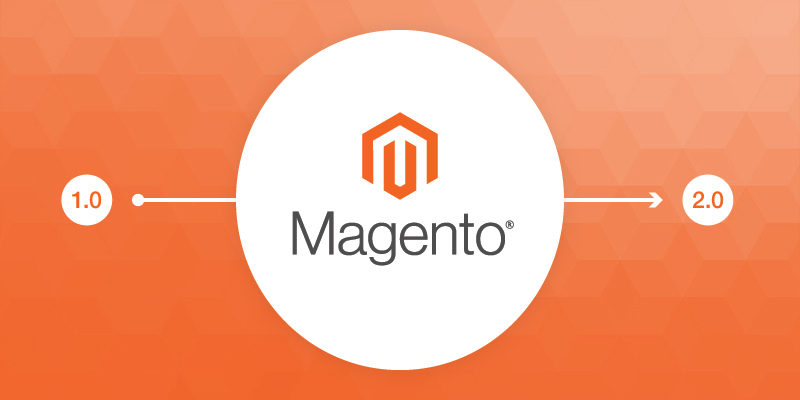Magento has recently announced that it will be ending its support for Magento 1 on June 30, 2020. This means that Magento and Adobe will no longer provide security updates or patches for Magento 1 after this date, and merchants will either need to migrate to Magento 2 or switch to another eCommerce platform before the Magento 1 end of life date. Merchants who wait to migrate to a new platform after June 2020 will become increasingly vulnerable to bugs and security threats, whether they are using Magento Commerce 1 (Enterprise Edition) or Magento Open Source 1 (Community Edition).
How will the Magento 1 deprecation affect merchants?
Merchants who utilize data feeds for their eCommerce presence will want to make sure to update their data sources on all channels after transitioning from Magento 1 to Magento 2 or another platform. If you use a product feed platform like Feedonomics, communicate the date of your upcoming eCommerce platform migration in advance so your data feed specialists can help you make the transition as seamless as possible. 3rd-party extensions for Magento 1 may not be available or compatible with other eCommerce platforms, so it’s also a good idea to leave additional time for testing and developing a new workflow.
To determine which version of Magento you are utilizing, login in to your Admin dashboard and scroll to the bottom of the page. Magento 1 users can find their version number at the bottom-center of the page, and Magento 2 users can find their version number at the bottom-right of the page.

Here is an example of the Magento 2 version number. Magento 1 will show the version number in the center.
What are some alternatives to Magento 1?
Now that Magento 1 support is ending, this may be a great opportunity to review if Magento is still the right shopping cart for your business. If you are an enterprise company, a shopping cart that can support high volume of transactions or number of SKUs may be the best option. If you are a small to mid-sized company, you may want to consider other options that offer stronger support and may be less expensive.
Magento 2

If you’re already using Magento 1, consider making the jump to Magento 2. Magento 2 carries on the tradition of flexibility and customizable features, but is built on more current coding languages. It is compatible with PHP 7 right out of the box, and boasts faster load times than Magento 1. Magento 2 also features new, user-friendly dashboards, business analytics tools, and a streamlined checkout for customers. Some Magento 1 users may find that the tasks they achieved only through using extensions are now possible to replicate with Magento 2’s core code.
When it comes to choosing between Magento 2 Open Source or Magento 2 Commerce, remember that Magento 2 Open Source is free but will still have hosting, development, maintenance, and other costs associated with it. Magento 2 Commerce has licensing fees, tiered revenue-based pricing, and other costs associated with it (minus hosting costs if you choose Commerce Cloud). However, Magento 2 Commerce will include advanced features and technical support that are not available with Magento 2 Open Source.
Magento 2 Commerce is a good PaaS (platform-as-a-service) option for medium to large businesses that have complex product catalogs and prefer a more customized experience. Magento is known for being highly scalable.
Shopify Plus

Shopify Plus is emerging as another leading eCommerce platform option for medium to large sellers. Unlike Magento, Shopify is not open-source, which means a lower degree of customizable options for sellers, but it also means that security, hosting, and updates are handled by Shopify. Merchants will need to submit an application to be approved for Shopify Plus, and the pricing will vary based on the merchant’s revenue and business needs.
Shopify Plus is a good SaaS (software-as-a-service) option for enterprise sellers with simpler product catalogs and less dedication to web development. Advanced customization often relies on third-party app integrations, but Shopify has a large selection of apps to browse through in their store, and many themes to choose from.
Shopify also offers plans for small to medium businesses, with different monthly pricing options and shipping discounts, credit card fees, and other features to consider based on your anticipated sales.
BigCommerce Enterprise

BigCommerce Enterprise is another popular eCommerce platform for medium and large sellers. It has unlimited staff accounts and built-in support for many advanced features, like flexible shipping setup and multiple payment gateways. BigCommerce handles the hosting and security updates, so web development experience is not needed, but there may be a learning curve if you want to fully use all of its capabilities. BigCommerce does not charge any transaction fees (apart from credit card processing), and is fully hosted.
BigCommerce Enterprise offers custom pricing based on your total online sales, and you will need to submit an application for consideration. Like Shopify, BigCommerce also offers subscription plans for smaller businesses. Different plans have different monthly subscription fees. Unless you are using an Enterprise plan, BigCommerce requires you to upgrade your plan once you surpass certain sales thresholds.
Salesforce Commerce Cloud

Salesforce Commerce Cloud is a fully-hosted SaaS eCommerce platform for medium to large businesses. The hosting, maintenance, and security is handled by Salesforce Commerce Cloud, and it is highly scalable. It is less customizable than Magento from a web development perspective, but thanks to the breadth of its product offering, it can be utilized across your entire business organization, from the sales team to fulfillment.
Pricing is based on your projected revenue, and Salesforce Commerce Cloud has options for small to large businesses, though it is known for hosting many household name brands, like Adidas, Kone, and Farmers Insurance. Billing is annual and requires at least a full year’s commitment, but Salesforce Commerce Cloud offers a 30-day free trial.
WooCommerce on WordPress

Like Magento, WooCommerce is highly-customizable if you have resources for development and utilize extensions. WooCommerce is a WordPress plugin, so you will need a WordPress website to make use of it. WooCommerce is typically used by small and medium businesses, but scalability is really only limited by your site infrastructure and development resources.
WooCommerce does not have as many ready-to-use eCommerce features as Shopify, but it is also free (apart from hosting and development), until you add on advanced extensions.
There are many factors to consider when deciding which eCommerce platform will best replace Magento 1 for your business needs. No matter which you choose, Feedonomics will be happy to assist you with your data feed optimizations! Feed On!

Brian Roizen is the Cofounder and Chief Architect of Feedonomics, a full-service feed optimization platform that optimizes product data for hundreds of channels. He has been featured on numerous podcasts and eCommerce webinars, and regularly contributes to Search Engine Land and other industry-leading blogs. Brian graduated summa cum laude from UCLA with both a Bachelor’s and Master’s degree in Mechanical Engineering.




